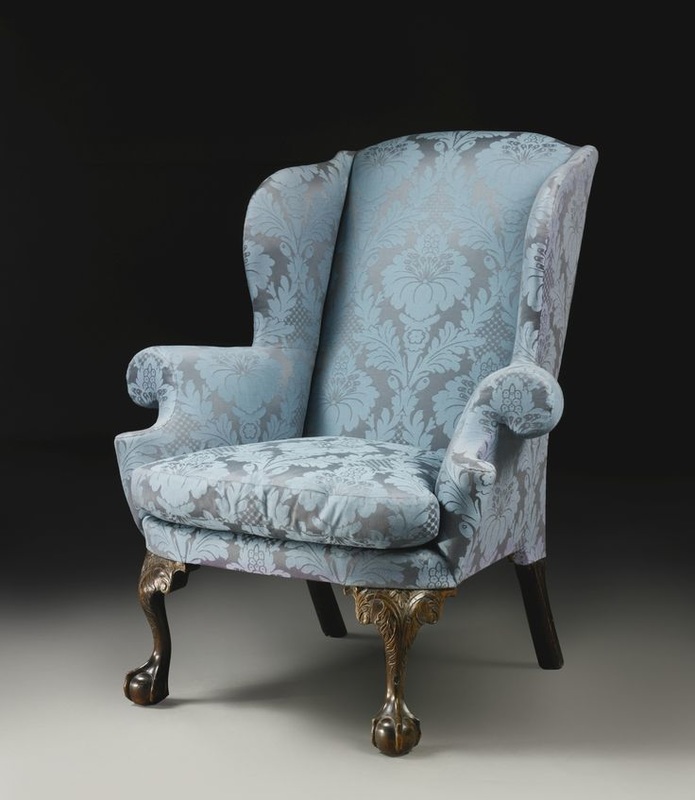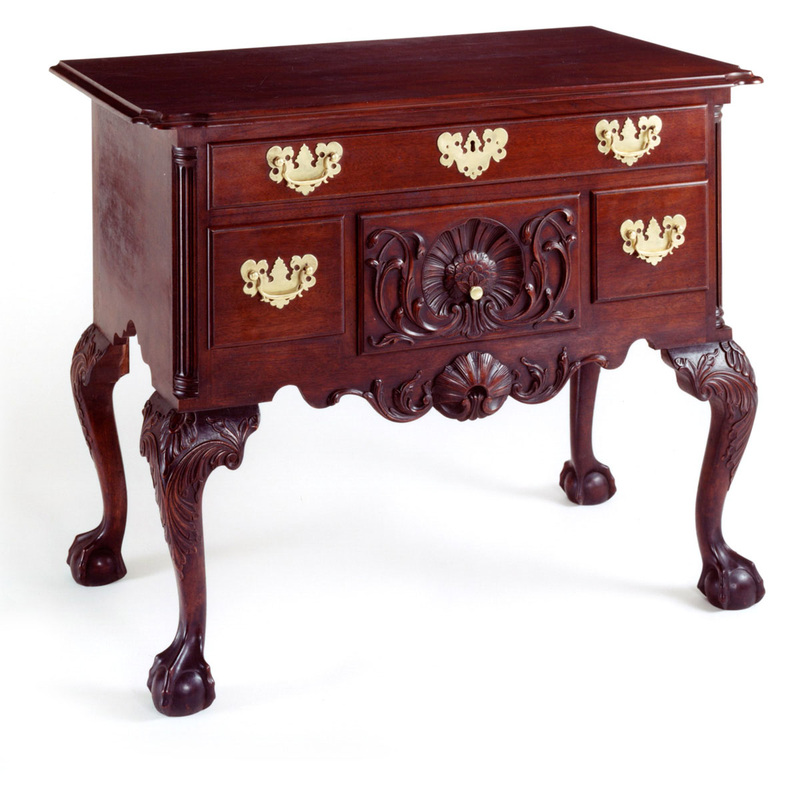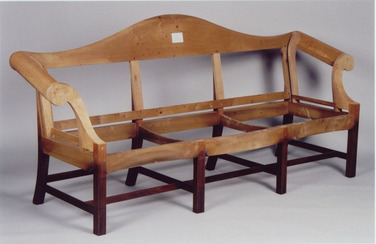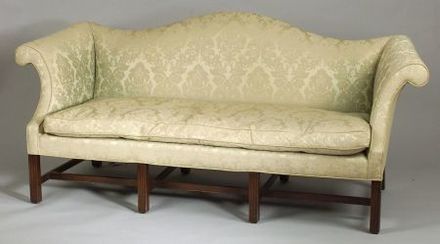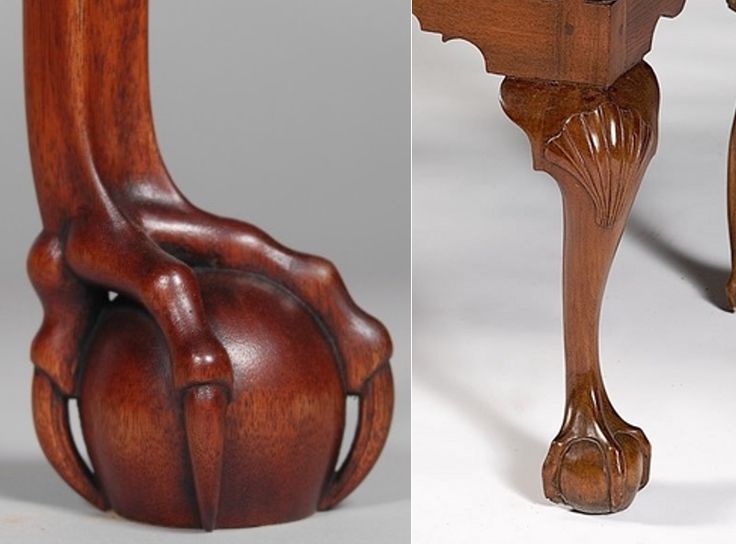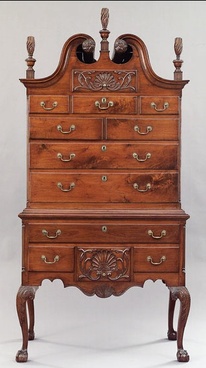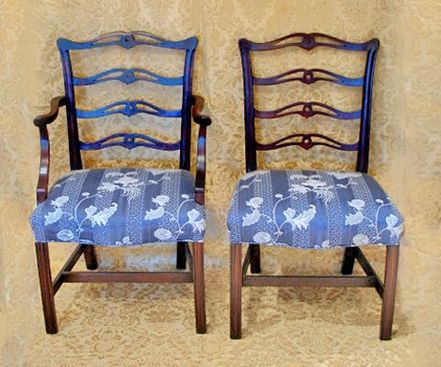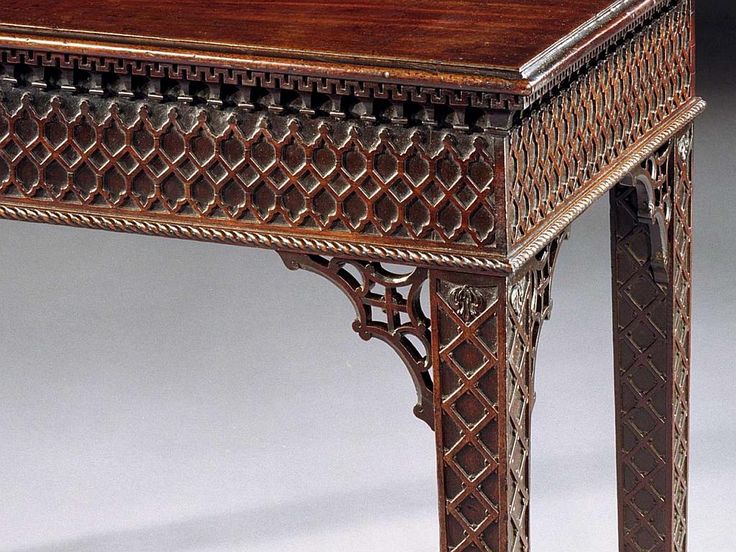Chippendale (1740-1779)
Of all the names associated with antique furniture, Chippendale is the most well known. The Chippendale style dominated American furniture until the 1770s. Known by its exquisite and extensive carving, it takes its name from Thomas Chippendale, an 18th century cabinetmaker, whose furnishings reflected popular English tastes of the period incorporating English, Gothic, and Chinese motifs.
Chippendale's designs became very popular again during the middle to late 19th century, leading to widespread adoption of his name in revivals of his style. Many of these later designs that attach his name bear little relationship to his original concepts.
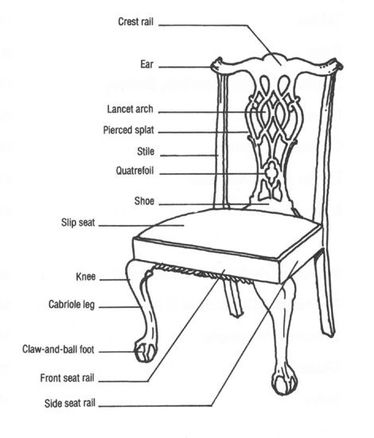
Principal Characteristics:
- claw and ball foot
- ladder back
- leg more slender than Queen Anne
- extremely carved splats and rectangular backs
- carved cabriole legs
- broken pediment on larger pieces
- Chinese fret
|
Chippendale Style Legs:
Many Chippendale pieces have cabriole legs (the curving design illustrated in the photo shown here). American cabinetmakers from Newport, Rhode Island often used classically styled reeded or fluted legs as well. Furniture makers in Philadelphia slanted toward Rococo influence resulting in more elaborately carved legs. Some pieces, such as side chairs and small tables, have straight legs but other elements of Chippendale style are still present. Chippendale Style Feet: American cabinetmakers often incorporated the ball and claw foot (as illustrated in the photo shown here) into their Chippendale style designs. The ball-and-claw foot was already passé with English furniture craftsmen at this time, according to Schwartz. |
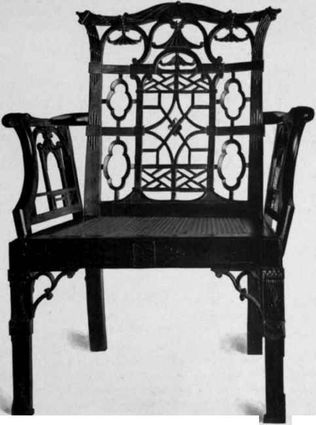
The Chinese Chippendale designs in The Director were applied to china cabinets, or
china shelves, which had glazing bars in a fretwork design and a pagoda-style
pediment. A similar fretwork was used for a gallery around the edges of “china
tables,” or tea tables, and for the backs and legs of chairs. Some pieces of Chinese
Chippendale furniture, often intended for rooms decorated in chinoiserie, or Chinese
style, were japanned, or coated with oriental-style lacquer.
|
Fretwork is an interlaced decorative design that is either carved in low relief on a solid background, or cut out with a fretsaw, coping saw, jigsaw or scroll saw,Fretwork patterns originally were ornamental designs used to decorate objects with a grid or a lattice. Most fretwork patterns are geometric in design. Fretwork is used to adorn furniture and musical instruments. Fretwork is also used to adorn/decorate architecture, where specific elements of decor are named according to their use such as eave bracket, gable fretwork or baluster fretwork.
|
